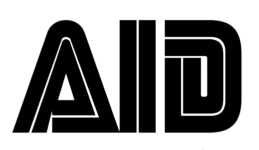 Back to projects
Back to projects

Embodying a fully AI-based approach, this project aims to deliver highly accurate and efficient diagnostics
- Date: 2023 - Present
- Contact us to learn more about this project. *
Problem: Traditional diagnostic methods in medicine often rely on established practices such as physical examinations, blood tests, and imaging scans. While effective, these methods can sometimes be invasive, time-consuming, and limited in their ability to detect subtle, early-stage conditions. Diagnostic accuracy can also be hindered by human error or the inability to interpret complex data with the precision required to catch elusive or rare conditions. Furthermore, the sheer volume of data from various diagnostic sources - such as medical imaging, lab tests, and patient history - can overwhelm medical professionals, leading to delays in diagnosis and treatment. As healthcare demands increase, there is a growing need for more accurate, non-invasive, and efficient diagnostic tools that can process large datasets quickly and provide high-precision results.
In addition, current diagnostic practices may overlook unconventional signals that could be valuable in identifying health issues. For example, subtle changes in voice patterns, eye movements, or skin texture may correlate with underlying conditions but remain unrecognized in traditional diagnostic approaches. This creates a gap in the medical field's ability to leverage all possible indicators for early detection, which can be critical for diseases like cancer, neurodegenerative disorders, and cardiovascular conditions.
Solution: This project aims to harness the power of artificial intelligence (AI) to deliver highly accurate and efficient diagnostics by incorporating unconventional data sources such as medical image processing, voice analysis, and eye-tracking. AI algorithms can analyse vast datasets far more efficiently than humans, identifying patterns and correlations that might otherwise go unnoticed. For example, AI-based image processing can enhance the detection of abnormalities in medical scans (such as X-rays, MRIs, and CT scans), identifying early signs of disease with greater precision. Voice analysis, another unconventional method, can detect changes in vocal patterns that might signal neurological or respiratory conditions. Similarly, eye-tracking technologies can be used to monitor pupil dilation or movement patterns, providing early indicators of brain injuries, cognitive disorders, or even psychological conditions.
By incorporating these unconventional data streams into an AI-driven diagnostic system, healthcare providers can obtain a more holistic view of a patient's health. The AI system's ability to continuously learn and refine its diagnostic capabilities ensures that it stays up-to-date with the latest medical advancements, making it a valuable tool for both early detection and ongoing monitoring of chronic conditions. This approach can also reduce the burden on healthcare professionals, allowing them to focus on treatment while AI handles the heavy lifting of data analysis. Ultimately, this project aims to revolutionise diagnostics by delivering faster, more accurate, and less invasive solutions, improving patient outcomes and overall healthcare efficiency.

